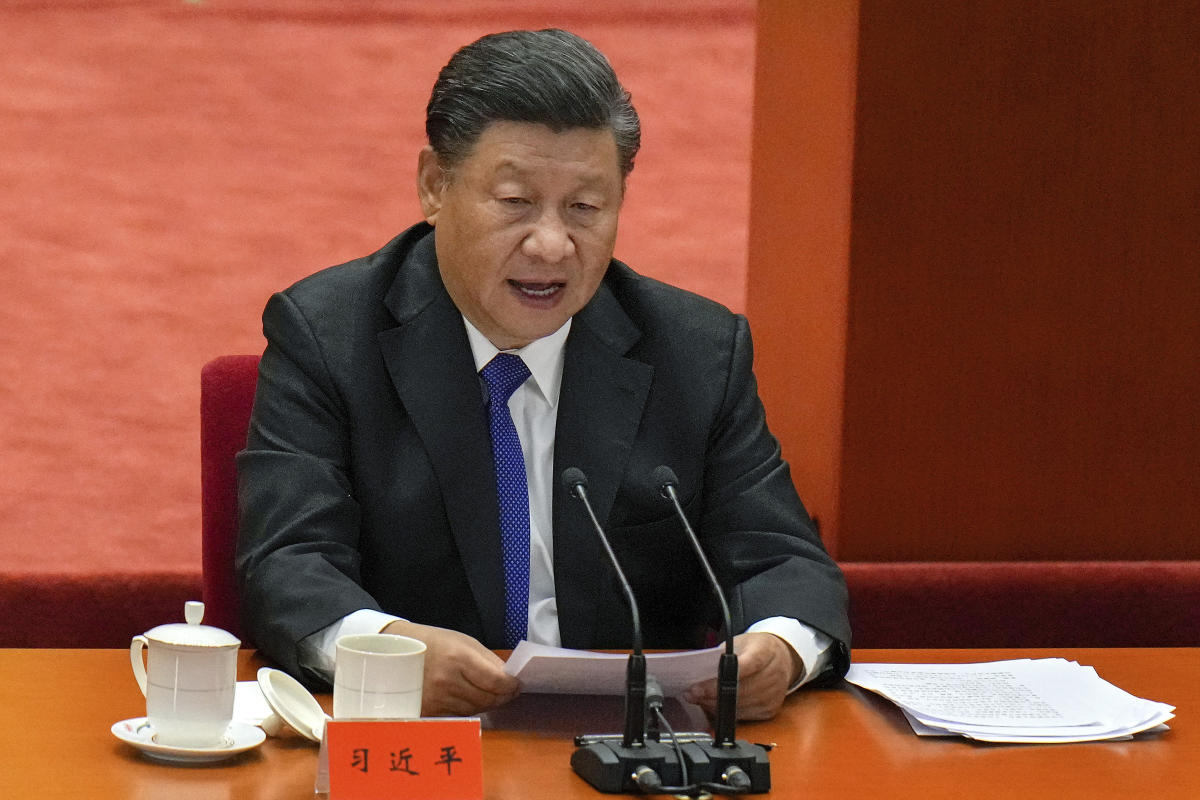WASHINGTON (AP) — According to a recently released Pentagon report on China’s military powerPentagon report, Beijing is surpassing earlier estimates in the pace of its nuclear weapons arsenal expansion. The report suggests that China is “almost certainly” drawing lessons from Russia’s actions in Ukraine to understand the potential scenario of a conflict over Taiwan.
In addition, the report highlights the possibility that China is developing a new intercontinental missile system using conventional weapons. If deployed, this system would enable Beijing to pose a conventional threat to targets in the continental United States, Hawaii, and Alaska.
The release of this report comes just a month before the anticipated meeting between Chinese leader Xi Jinping and President Joe Biden at the upcoming Asia-Pacific Economic Cooperation summit in San Francisco.
This annual report, mandated by Congress, is one of the ways the Pentagon evaluates the evolving military capabilities of China. The United States government considers China its primary long-term security challenge and the most significant threat in the region.
However, following the recent attacks by Hamas on Israel, the United States has had to divert its attention from its pivot to the Pacific to focus on the Middle East. As a result, the US is expediting the supply of weapons to Israel while continuing to assist Ukraine in its efforts to resist Russia’s invasion.
Nevertheless, the Pentagon’s national defense strategy revolves around China maintaining its status as the major security challenge facing the United States. Consequently, the threat posed by Beijing will shape the future equipment and structure of the US military.
This Pentagon report builds upon last year’s warning that China was rapidly modernizing its nuclear arsenal at a much faster rate than anticipated. It emphasizes China’s extensive and accelerating military buildup, designed to potentially match or surpass US global power by the mid-21st century.
The previous report predicted that by 2035, China would quadruple its nuclear warhead numbers to 1,500. In contrast, the United States currently possesses 3,750 active nuclear warheads. The 2023 report indicates that China is on track to have over 1,000 nuclear warheads by 2030, as part of its rapid modernization efforts aimed at achieving President Xi’s goal of establishing a “world-class” military by 2049.
Following last year’s report, China accused the United States of escalating tensions. Beijing maintains that it adheres to a “no first use” policy regarding nuclear weapons. Although the Pentagon has not observed any indications of China deviating from this policy, it acknowledges the possibility that there may be certain circumstances in which China might deem it inapplicable.
Unlike China, the United States does not have a “no first use” policy and asserts that it would only employ nuclear weapons in extreme situations.
The report also highlights China’s intensified military, diplomatic, and economic coercion against Taiwan and neighboring countries. China aims to counter what it perceives as US attempts to contain its rise. China’s efforts against Taiwan include ballistic missile overflights, increased incursions of warplanes into Taiwan’s international defense zone, and large-scale military exercises that encircle Taiwan.
Beijing has declared its determination to reunify Taiwan with the mainland and has given its military until 2027 to develop the necessary capabilities to achieve this objective. In response, the United States has committed substantial financial resources to supply Taiwan with military weapons to strengthen its defenses and deter potential attacks.
At the same time, China has also significantly increased its military spending. According to public budget figures, China’s military budget for 2023 increased by 7.2% to 1.58 trillion yuan ($216 billion). This growth rate exceeds China’s economic growth. However, US officials believe that the actual military expenditure may exceed the reported figure. Beijing asserts that it maintains a defensive military policy solely for safeguarding the country’s interests.
The report further notes that China has stepped up its harassment of US warplanes flying in international airspace in the region, with over 180 encounters where Chinese aircraft aggressively intercepted US military flights.
In addition to China’s activities, the report examines the incident involving the US overflight of China’s spy balloon. It underscores the risk of escalation due to the lack of communication between the two militaries. Although the report doesn’t cover the recent conflict between Israel and Hamas, it highlights how China is leveraging the lessons learned from Russia’s actions in Ukraine. China is now striving for industrial and economic self-reliance as it witnessed the repercussions of Western sanctions imposed on Russia.
According to the report, Russia’s invasion of Ukraine posed a significant and unforeseen challenge for China. It compelled Beijing to assess its relationship and support for Russia based on potential reputational and economic costs that could hinder its overarching goal of becoming a global power.
___
This report includes information from Associated Press writer Didi Tang.


